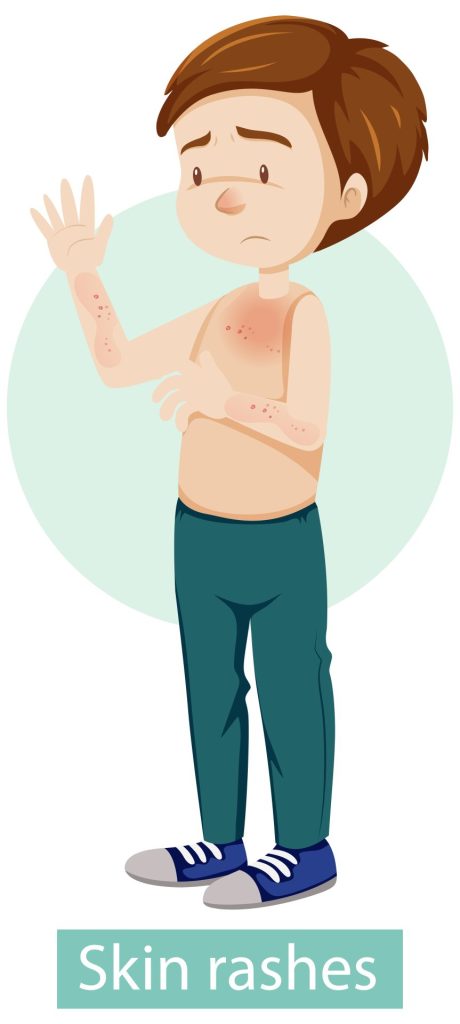Rashes and itching are among the most common skin issues people face. While many rashes are mild and go away on their own, others can be uncomfortable, persistent, and even signs of more serious chronic conditions. Whether it’s from an allergic reaction, infection, or skin disorder like eczema, knowing how to manage and treat these symptoms is important for your comfort and health.
This article will walk you through the common causes of rashes, how to treat them, and when it’s time to consider an online rash consultation for expert advice—all from the comfort of your home.
What Are Rashes and Itching?
A rash is a noticeable change in the texture or color of your skin. It may appear red, bumpy, scaly, or even blistered. Itching is the irritating sensation that makes you want to scratch. Rashes and itching often go hand-in-hand, though not always.
Common types of rashes include:
Contact dermatitis – caused by irritants like soaps, plants (such as poison ivy), or certain metals like nickel.
Eczema – a chronic skin condition that causes red, inflamed, and itchy patches.
Heat rash – triggered by blocked sweat ducts in hot, humid weather.
Fungal infections – such as athlete’s foot or ringworm.
Bacterial infections – like impetigo, often seen in children.
Allergic reactions – from food, medications, or insect bites.
Causes of Rashes & Itching
Identifying the root cause of a rash can help guide treatment. Here are a few common causes:
Allergic reactions to food, medications, or plants
Skin conditions like psoriasis or eczema
Infections (fungal, viral, or bacterial)
Environmental triggers such as heat or humidity
Friction or moisture in skin folds (intertrigo)
Reactions to skincare products or makeup
In some cases, rashes may be a symptom of more serious chronic conditions, including autoimmune diseases or internal infections. That’s why getting a proper diagnosis is so important.
Home Remedies and When to See a Doctor
Mild rashes can often be treated at home. Some general self-care tips include:
Applying cool compresses to reduce itching
Taking oatmeal baths
Using over-the-counter creams like hydrocortisone
Avoiding scratching to prevent infection
Staying away from known triggers like scented lotions or jewelry
However, you should seek medical advice if:
The rash is painful or rapidly spreading
It’s accompanied by fever or swelling
There’s pus or signs of infection
The rash doesn’t improve after 2–3 days
It appears after a tick bite or unknown insect bite
Effective Treatments for Rashes
Depending on the type and cause of your rash, treatment options may include:
Topical ointments – Help soothe the skin and reduce inflammation.
Antibiotics – Used if the rash is caused by a bacterial infection.
Antifungal medications – Treat fungal infections like athlete’s foot or ringworm.
Antiviral medications – Required for viral skin infections such as shingles.
Retinoids – Often used for chronic skin conditions like psoriasis and acne.
If you’re already on medication for other health issues, a doctor may also recommend adjustments or medication refills as part of your care.
The Convenience of Online Rash Consultation
If you’re dealing with a rash but don’t want to wait days for an appointment or travel to a clinic, an online rash consultation is a smart solution. Services like GetCare MD allow you to meet with licensed healthcare professionals via video consultation, making it easy to get a diagnosis and treatment plan from home.
Benefits of online consultations:
No need to travel or wait in a clinic
Fast diagnosis and personalized treatment plans
Access to prescriptions and medication refills if needed
Private, secure, and time-saving
Ideal for both acute and chronic conditions
Prevention Tips
While some rashes can’t be completely avoided, you can reduce your risk with a few simple habits:
Use fragrance-free soaps and moisturizers
Wear breathable, loose-fitting clothing
Keep your skin dry, especially in folds or high-sweat areas
Avoid known allergens like certain plants or metals
Always patch test new skincare products
Conclusion: Don’t Wait to Get Relief
Rashes and itching can disrupt your daily life and affect your comfort. While some may be minor, others require professional medical attention—especially if symptoms persist or worsen. Instead of waiting or self-diagnosing, consider an online rash consultation for quick and expert care.
GetCare MD offers the best online itching and rash consultation, allowing you to speak with licensed providers through video consultation, get access to medication refills, and manage both minor irritations and chronic conditions efficiently.
Don’t suffer in silence—your skin deserves care, and relief is just a click away.

